|
Displaying items by tag: Edward Hopper

The American art sale, which took place today, May 23, 2013 at Christie’s in New York, realized $50.8 million, the highest total that the category has seen since May 2008. 99 out of the 135 lots offered sold and 85% sold by value.
The auction’s top lot was Edward Hopper’s (1882-1967) oil on canvas painting Blackwell’s Island (1928), which brought $19.1 million (estimate: $15 million-$20 million). Hopper also took the sale’s second top spot with his watercolor on paper Kelly Jenness House (1932), which sold for $4.1 million (estimate: $2 million-$3 million) and set the auction record for a work on paper by the artist. The Hopper sales reinforced the artist’s continued popularity among buyers and the strong market demand for exceptional Modernist works.
A highly anticipated collection of six paintings by the Wyeth family of artists sold for upward of $2 million. The works by N.C. (1882-1945), Andrew (1917-2009), and Jamie Wyeth (b. 1946) were put up for sale by New Jersey-based businessman and avid collector of the Wyeths’ works, Eric Sambol. The highlight of the collection was N.C. Wyeth’s Norry Seavey Hauling Lobster Traps Off Blubber Island (1938), which garnered nearly $844,000.
Other significant sales from the auction included Norman Rockwell’s (1894-1978) Starstruck (1934), which brought over $2 million, exceeding its high estimate of $1.2 million, Georgia O’Keeffe’s (1887-1986) My Back Yard (1943), which was purchased by the Cincinnati Art Museum for $1.8 million (estimate: $1 million-$1.5 million), George Bellows’ (1882-1925) Splinter Beach (1913), which achieved $1.2 million (estimate: $500,000-$700,000), and Sanford Robinson Gifford’s (1823-1880) Tappan Zee (1879-80), which sold for $1.1 million (estimate: $200,000-$300,000).
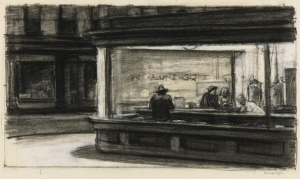
Hopper Drawing, which opens today, May 23, 2013 at the Whitney Museum of American Art in New York, is the first major museum exhibition to focus on the drawings and creative process of Edward Hopper (1882-1967). Known for his enigmatic renderings of rural and urban American life, Hopper’s paintings of seascapes, cityscapes, and their inhabitants are some of the most significant artworks of the 20th century.
The Whitney’s exhibition is not just a presentation of Hopper’s best-known works; it is a rare glimpse into the creative process that produced one of the most lauded oeuvres in modern art. Hopper’s drawings illustrate his ever-changing relationships with his subjects, which include the street, the movie theater, the office, the bedroom, and the road. Drawn from the Whitney’s remarkable Hopper collection, which includes 2,500 drawings given to the museum by the artist’s widow, Josephine, Hopper Drawing includes drafts of some of Hopper’s most recognized works alongside their oil painting counterparts. Works on view include Early Sunday Morning (1930), New York Movie (1939), Office at Night (1940), and Nighthawks (1942) together with their prepatory drawings and related works. The exhibition also includes pioneering archival research into the buildings and urban spaces that inspired Hopper’s work.
Drawing Hopper will be on view at the Whitney through October 6, 2013.
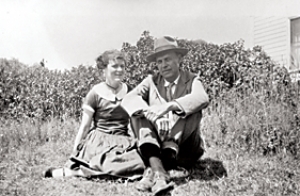
Edward Hopper (1882–1967) and his work have been endlessly described, critiqued, analyzed, dissected, and reassembled, both during his lifetime and since he left this world almost half a century ago. He has been stereotyped by the images that stay fixed in our minds, with the late-night diner scene in Nighthawks the most noteworthy example. Nevertheless, Hopper can still offer up some surprises. One of these is that between 1927 and 1938, in his relentless search for new subjects to paint, Edward Hopper made at least five summer trips into Vermont with his wife, Josephine Nivison Hopper (1883–1968) (Fig. 1), with two extended stays on a farm in South Royalton. The less than two dozen paintings of farm buildings and rural landscapes that Hopper made in central Vermont are relatively unknown within this famous artist’s repertoire. Unique works with ties to specific times and places, they contrast sharply with Hopper’s urban paintings, and they are distinctive even in comparison to Hopper’s works from elsewhere in New England.

The Museum of Modern Art’s William S. Paley collection is currently on view at the Portland Museum of Art in Maine. A Taste for Modernism presents 62 works that cover all of the pivotal movements that defined the art world during the late 19th and 20th centuries. The exhibition features works by 24 major artists including Edgar Degas (1834-1917), Paul Cézanne (1839-1906), Paul Gauguin (1848-1903), Pablo Picasso (1881-1973), Henri Matisse (1869-1954), Joan Miró (1893-1983), Alberto Giacometti (1901-1966), and Francis Bacon (1909-1922). The William S. Paley collection has been on a North American tour since 2012 and the Portland Museum of Art is the only venue in New England that the exhibition will visit.
Highlights from the exhibition include two works by Cézanne, which Paley acquired from the artist’s son; eight works by Picasso that trace his artistic evolution over the first three decades of the 20th century including Boy Leading a Horse (1905-06) from his Rose Period, the Cubist painting An Architect’s Table (1912), and the collage-inspired composition Still Life with Guitar (1920); Gaugin’s The Seed of the Areoi (1892), which was inspired by the artist’s trips to Tahiti; and Edward Hopper’s (1882-1967) realist landscapes.
William S. Paley (1901-1999), the media mogul responsible for building the CBS broadcasting empire, was an important art collector and philanthropist during the 20th century. Paley began collecting in the 1930s and took a particular liking to French modernist movements including Fauvism, Cubism, and Post-Impressionism. Paley played a major role in cementing the Museum of Modern Art as one of the most significant institutions in the world. MoMA was founded in 1929 and Paley fulfilled various roles at the museum including patron, trustee, president, and board chairman from 1937 until his death.
A Taste for Modernism will be on view at the Portland Museum of Art through September 8, 2013. It will them travel to the Musée national des beaux-arts du Québec (October 10, 2013-January 5, 2013) and The Crystal Bridges Museum of American Art in Bentonville, Arkansas (February-April, 2014).

Fine Lines: American Drawings from the Brooklyn Museum is now on view at the Brooklyn Museum in New York. The exhibition presents over 100 drawings and sketchbooks from the museum’s collection, many of which have rarely been seen.
Fine Lines features works created between 1768 and 1945 and includes drawings by more than 70 artists such as John Singleton Copley (1738-1815), Stuart Davis (1892-1964), Thomas Eakins (1844-1916), William Glackens (1870-1938), Marsden Hartley (1877-1943), Winslow Homer (1836-1910), Edward Hopper (1882-1967), Eastman Johnson (1824-1906), Georgia O’Keeffe (1887-1986), William Merritt Chase (1849-1916), and John Singer Sargent (1856-1925).
Fine Lines is organized into six categories and draws connections between artists from varying periods and artistic styles. Topics explored in the six sections are portraiture; the nude; the clothed figure; narrative subjects; natural landscapes; urban landscapes; and conservation techniques.
Fine Lines will be on view at the Brooklyn Museum through May 26, 2013.
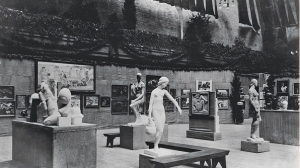
The 1913 International Exhibition of Modern Art, referred to today as the Armory Show, was one of the most influential art events to take place during the 20th century. The show, which was held in New York City’s 69th Regiment Armory, introduced the American public to experimental European art movements including Fauvism, Cubism, and Futurism. While realistic movements dominated the country’s art scene, works by Pablo Picasso (1881-1973), Henri Matisse (1869-1954), Wassily Kandinsky (1866-1944), and Marcel Duchamp (1887-1968) left the Armory Show’s American visitors awestruck.
On February 17, 2013, 100 years after the Armory Show took place, the Montclair Art Museum in Montclair, New Jersey presented The New Spirit: American Art in the Armory Show, 1913. The exhibition does more than just celebrate the significant art event; it commends the American artists who presented two-thirds of the nearly 1,200 works on view. While European art was a hugely important part of the Armory Show, The New Spirit aims to disprove the notion that the American art featured at the show was largely provincial.
The New Spirit brings together 40 diverse works of American modern art including realist works from the Ashcan School as well as more experimental pieces executed by the painters associated with the influential photographer and art dealer, Alfred Stieglitz (1864-1946). The Montclair exhibition presents works by well-known artists such as Edward Hopper (1882-1967), William Glackens (1870-1938), Marsden Hartley (1877-1943), Charles Sheeler (1883-1965), Robert Henri (1865-1929), and John Marin (1870-1953) alongside works by lesser-known artists including Manierre Dawson (1887-1969), Kathleen McEnery (1885-1971), and E. Ambrose Webster (1869-1935). The exhibition will also feature works by Paul Cézanne (1839-1906) and Matisse to illustrate the influence of European modern art on its American counterpart.
The New Spirit will be on view through June 16, 2013.
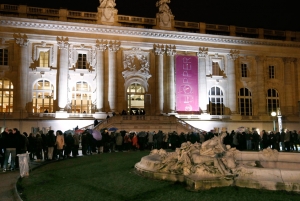
An Edward Hopper (1882-1967) retrospective, which was on view from October 10, 2012 to February 3, 2013 at the Grand Palais in Paris, welcomed a surprising number of visitors during its run. A total of 784,269 patrons visited the exhibition in less than four months, surpassing a blockbuster exhibition featuring the work of long-time Paris resident Pablo Picasso (1881-1973), which ran from 2008-2009 at the same French institution.
To accommodate the high number of visitors, the museum stayed opened around the clock during the show’s final weekend. 48,000 people visited the Grand Palais to catch a final glimpse of the Hopper show, including Jill Biden, the wife of US Vice President, Joe Biden.
The exhibition’s popularity came as somewhat of a surprise to museum officials as the American realist painter and printmaker has never drawn such a crowd in the United States. While he came close, Hopper was unable to surpass the popularity of the 2010-2011 Claude Monet (1840-1926) retrospective, which saw 913,064 visitors.
Hopper, who didn’t sell his first painting until he was 40, has grown considerably in popularity since his death at 85. Wildly successful exhibitions in Madrid, London, Milan, and Rome, which took place before Hopper’s show at the Grand Palais are a testament to the artist’s continued relevance.
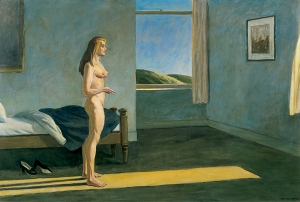
On December 22, American Legends: From Calder to O’Keeffe opened at the Whitney Museum of American Art in New York. The exhibition features works by defining artists of the first half of the twentieth century including Charles Burchfield (1893-1967), Alexander Calder (1898-1976), Stuart Davis (1892-1964), Arthur Dove (1880-1946), Marsden Hartley (1877-1943) , Edward Hopper (1882-1967), Georgia O’Keeffe (1887-1986), and Elie Nadelman (1880-1946).
Drawing from the Whitney’s impressive permanent collection, the yearlong show is organized into small-scale retrospectives for each artist and includes iconic and lesser-known works across a range of mediums. While, many of the works have not been on view in years, the show also includes some of the Whitney’s best-known holdings including Edward Hopper’s A Woman in the Sun (1961), Jacob Lawrence’s War Series 1946), and Georgia O’Keeffe’s Summer Days (1936).
Curated by Barbara Haskell, the exhibition will undergo a rotation in May 2013 so that other artists’ works can be installed. Including realist and modernist masterpieces, American Legends illustrates the dynamic and varied nature of American art during the early twentieth century.

The back-to-back American art auctions that took place at Christie’s and Sotheby’s this week both garnered impressive numbers. The auction at Christie’s on November 28 set the bar high when it reached $38,469,650 in sales. However, Sotheby’s followed up strong and achieved a total sale of $27,608,500, exceeding the high estimate of $24,158,000. Franklin Riehlman, owner of Franklin Riehlman Fine Art in New York City said, “Prices at Sotheby’s were nice and strong. Christie’s had a phenomenal sale and Liz Sterling has done a wonderful job reconstructing the department.” Elizabeth Sterling was appointed the head of American art at Christie’s earlier this year.
The top lot at Christie’s was Edward Hopper’s October on Cape Cod (1946), which went for $9.6 million and set a new record for the most expensive item sold to an online bidder. The oil painting, which features a house and small barn from a distance, is one of the last works by Hopper remaining in private hands. Other solid sales were Charles Burchfield’s Golden Dream (1959), which brought $1,202,500; Stuart Davis’ City Snow Scene (1911), which also reached $1,202,500; and Martin John Heade’s Hummingbird Perched on the Orchid Plant (1901), which brought $1,802,500.
Georgia O’Keeffe fared well at both auctions and took the top two lots at Sotheby’s; both plant paintings, Autumn Leaf II (1927) realized $4,282,500 and A White Camellia (1938) brought $3,218,500. “O’Keeffe did very well,” said Riehlman. “There was a lot of bidding.” An O’Keeffe painting titled Sun Water Maine (1922) also reached the second highest price at Christie’s when it realized $2,210,500, exceeding the high estimate of $1,500,000.
Norman Rockwell continued to perform well at Sotheby’s and two paintings exceeded their high estimates when The Muscleman (1941) sold for $2,210,500 (high estimate: $800,000) and Doctor and Doll (1942) reached $1,874,500 (high estimate: $700,000). Other impressive sales included Alfred Jacob Miller’s Caravan En Route [Sir William Drummond Stewart’s Caravan] (circa 1850), which went for $1,762,500 and Arthur Dove’s Town Scraper (circa 1933), which realized $1,258,500.
“The market for early modernists seems very strong,” said Riehlman. “Older works didn’t do as well. Cassatt and Prendergast are spotty, but 15 years ago every Cassatt would have sold.” Out of the one Mary Cassatt work offered at Sotheby’s and two present at Christie’s, not a single piece sold. Similarly, Maurice Prendergast’s one painting offered by Sotheby’s, Park Street Church, Boston (circa 1905-07), failed to sell and at Sotheby’s, Picnic Party (circa 1900-03) didn’t quite reach its low estimate of $300,000 when it sold for $290,500 and New Hampshire (circa 1910-13) just broke its low estimate of $40,000 when it realized $43,750.
“Both houses are being very selective in terms of traditional 18th and 19th century materials,” said Riehlman. Buyers are much more likely to make significant purchases when the majority of works are top-quality. Despite the declining interest in older works, there was a lot of action at both sales. Riehlman was planning on buying Marvin Cone’s Stone City Landscape (1936), which realized $752,500, a record for the artist. “It went like a freight train right by me,” he said, a testament to just how eager buyers were this week.
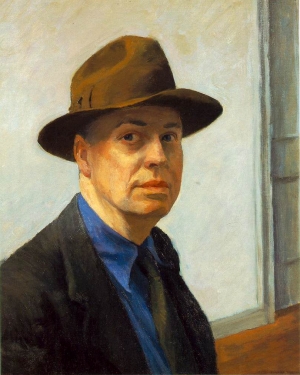
Last month the Edward Hopper House Art Center, located in the artist’s childhood home in Nyack, New York, dedicated one of its rooms to the late Reverend Arthayer R. Sanborn. A friend of the Hopper family, Sanborn led the First Baptist Church down the street from the Center and had lent the institution many works by Hopper his personal collection before his death in 2007. Sanborn also maintained the Hopper house when it fell vacant in the late 1960s.
Gail Levin, an art historian and foremost expert on Hopper, has stepped forward to object to Sanborn’s seemingly harmless recognition. Levin sent an e-mail to various news organization raising questions about how Sanborn came into his collection that included paintings, watercolors, and drawings by Hopper. Sanborn, who had eventually put more than 100 of works from his collection up for sale, claimed that Hopper and his wife, Josephine, had given many of the works to him. Levin rebutted this and said that during a conversation with Sanborn in the 1970s, he complained that Hopper had given him nothing, despite the fact that he was caring for him and his aging wife. Sanborn also claimed that he had purchased a number of works from the estate of Josephine Hopper, but under Mrs. Hopper’s will, it states that all of Hopper’s works were to go to the Whitney Museum of Art.
Officials at the Hopper House Center addressed Levin’s claims and said that the dispute was not of major concern as Sanborn has been deceased for the past five years, making her case difficult to pursue. The Center also values the Reverend’s contributions and isn’t looking to sever any ties with the Sanborn family.
|
|
|
|
|